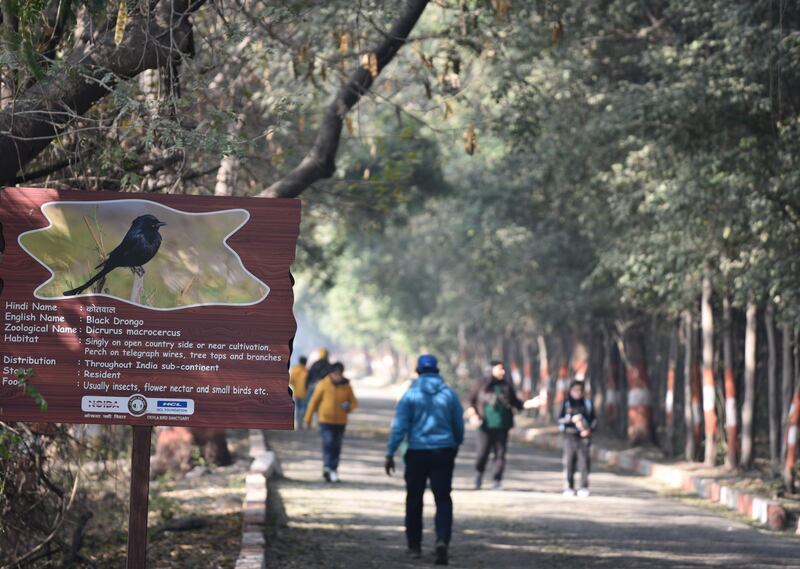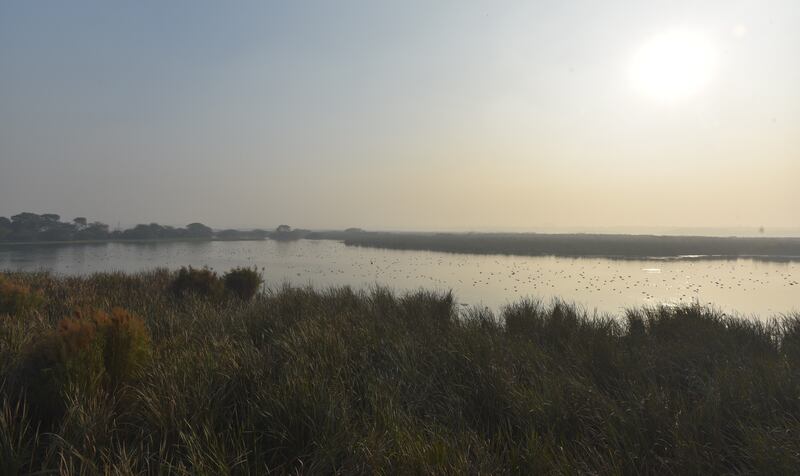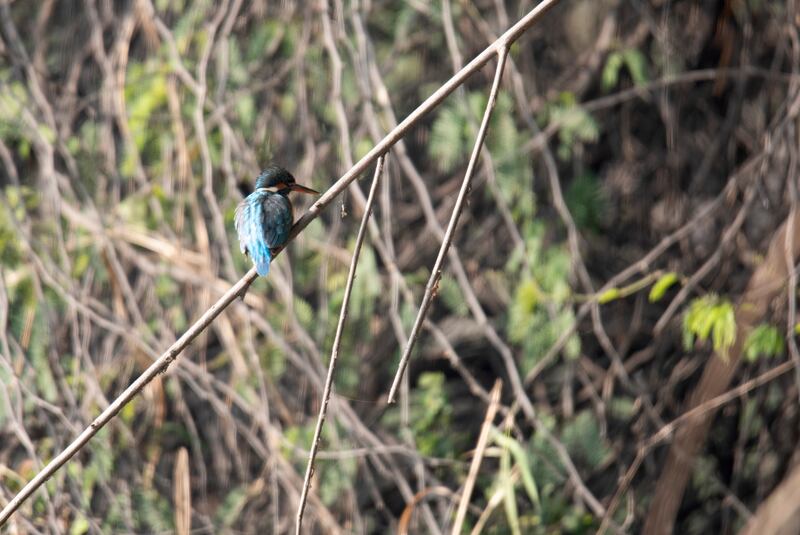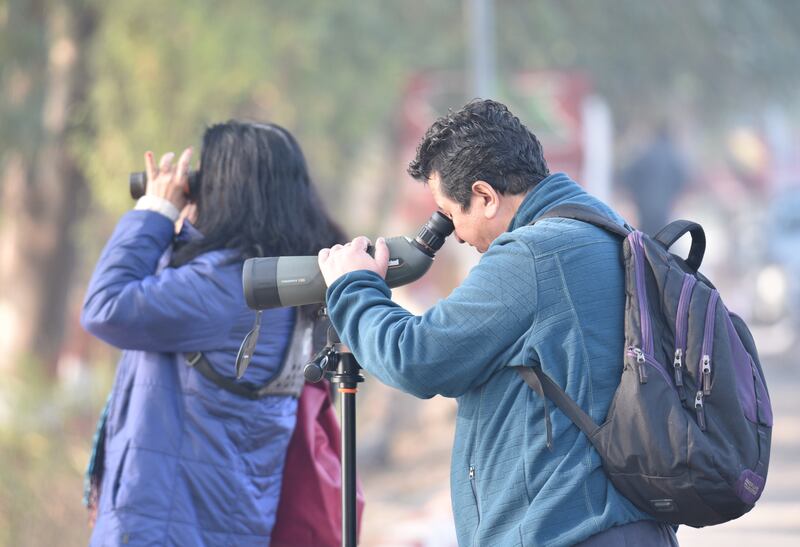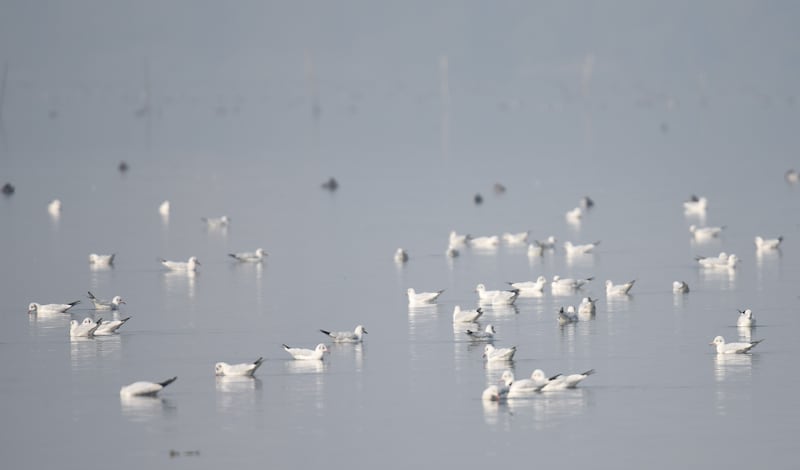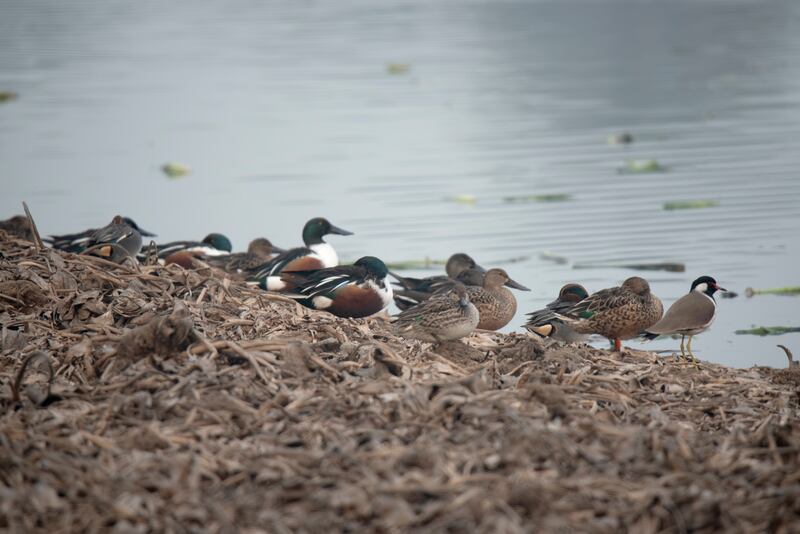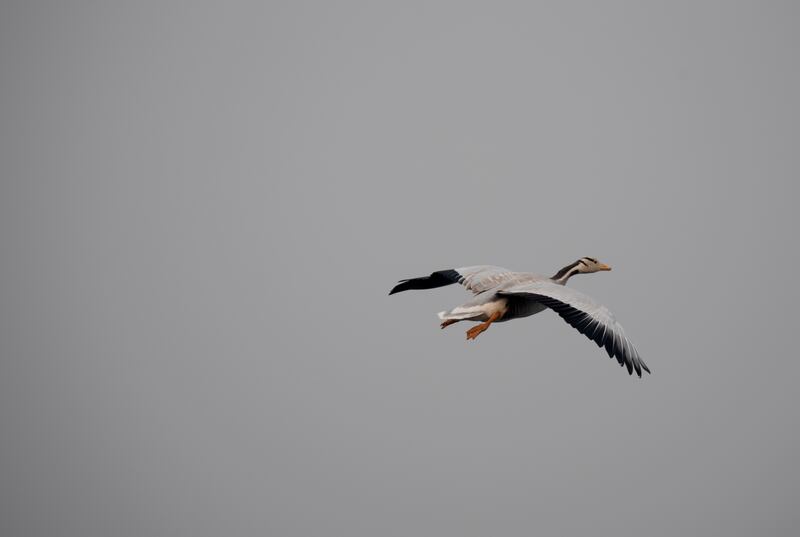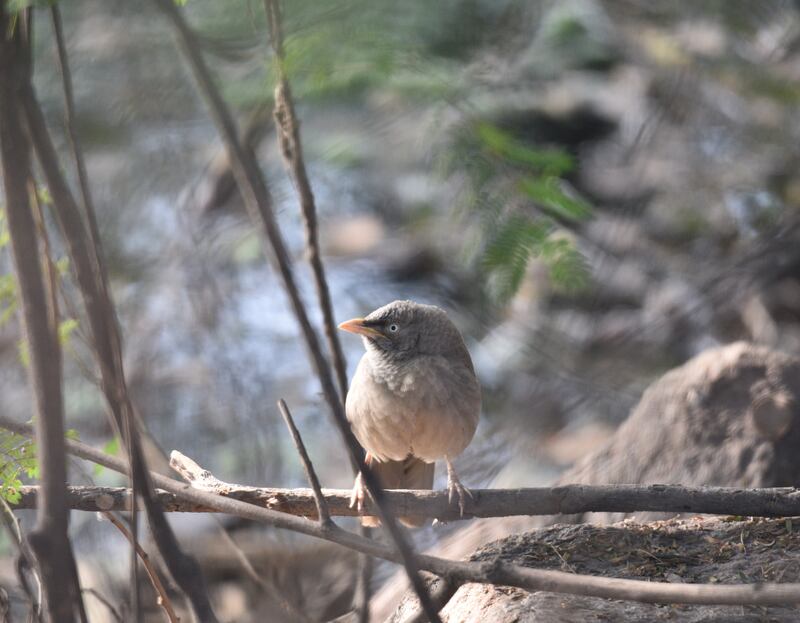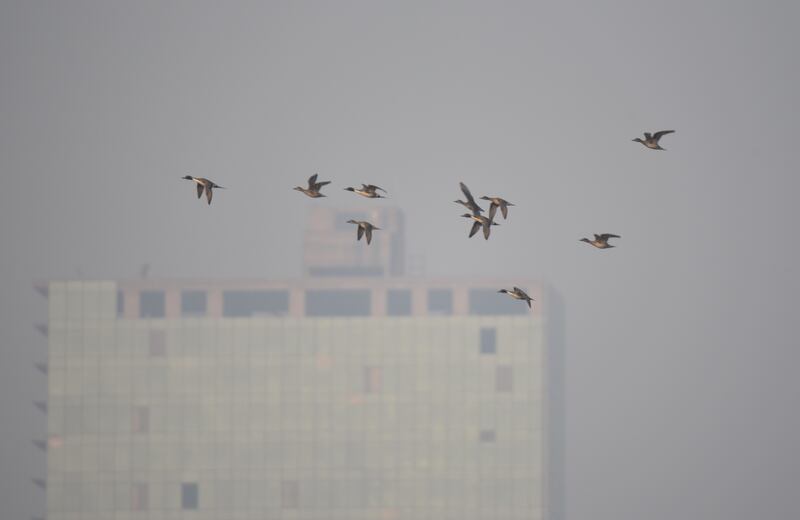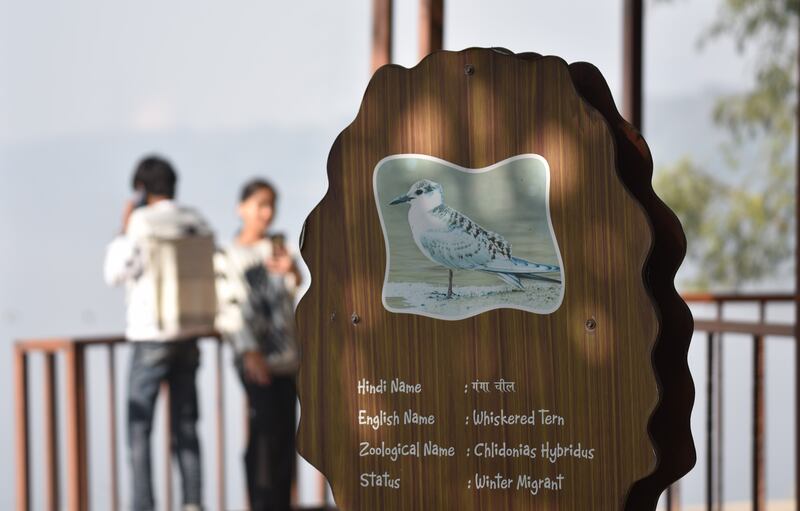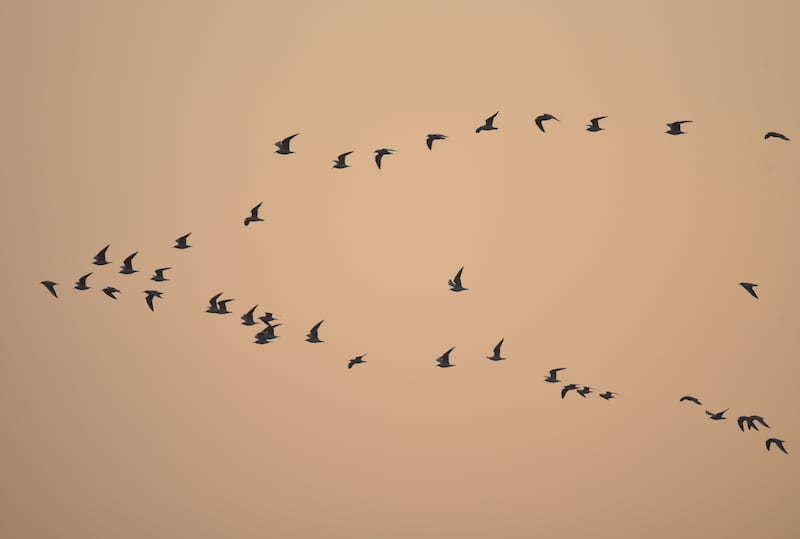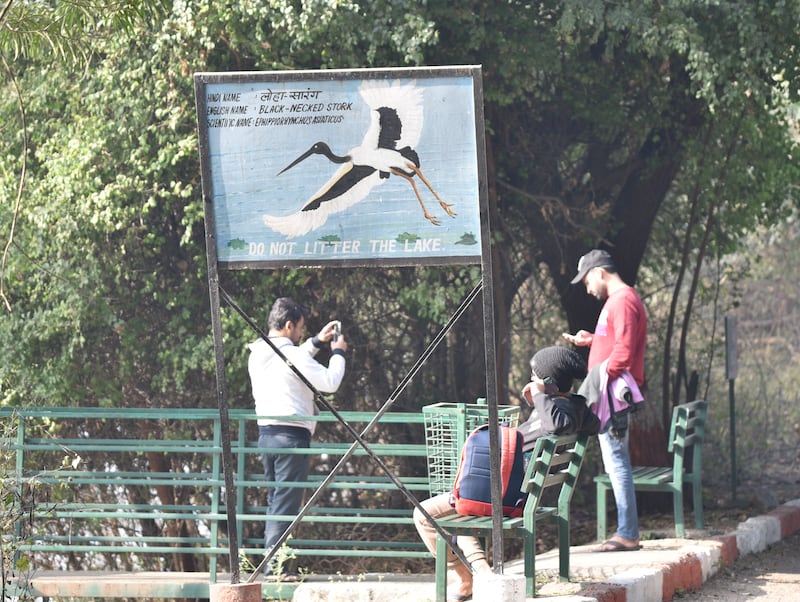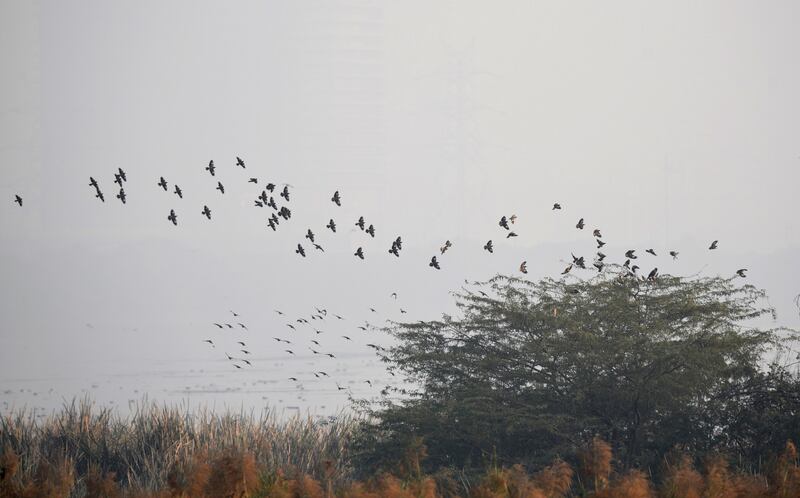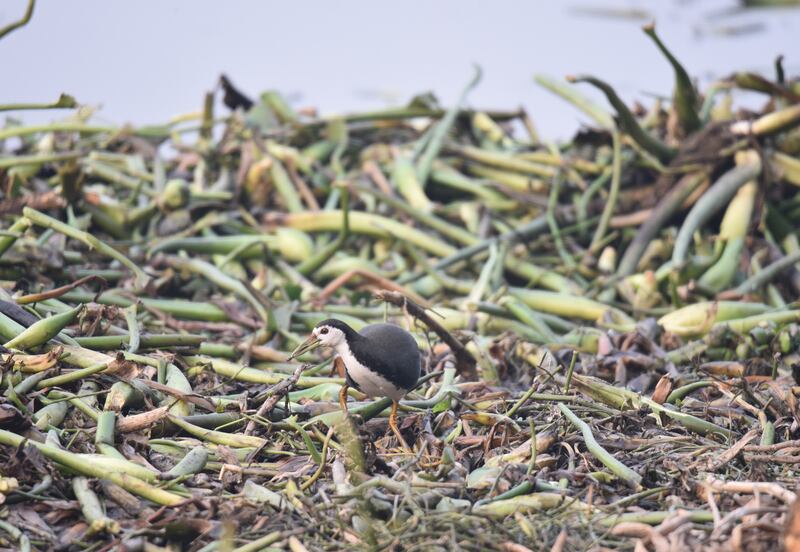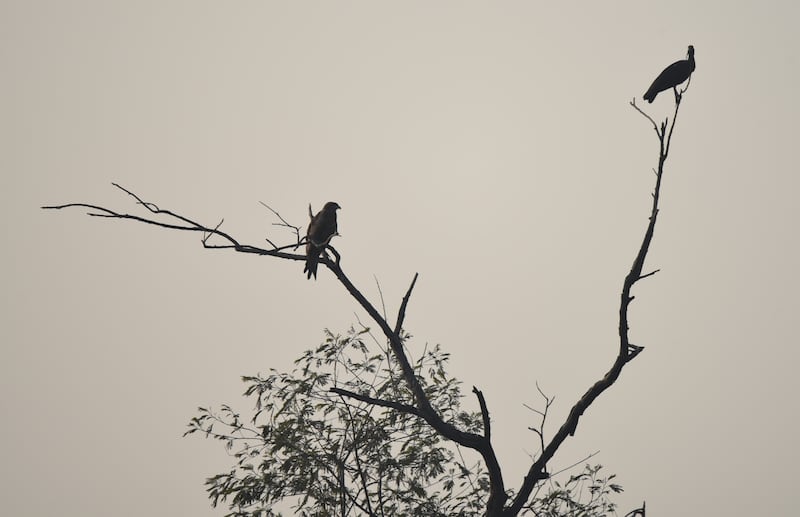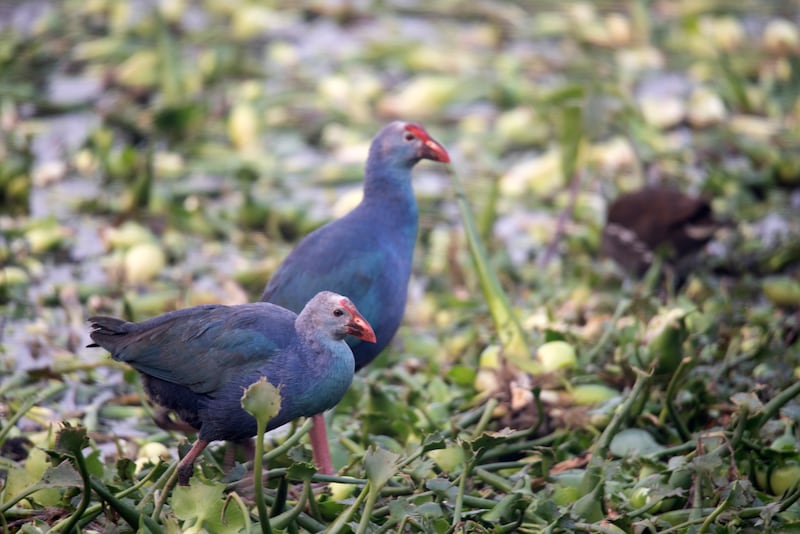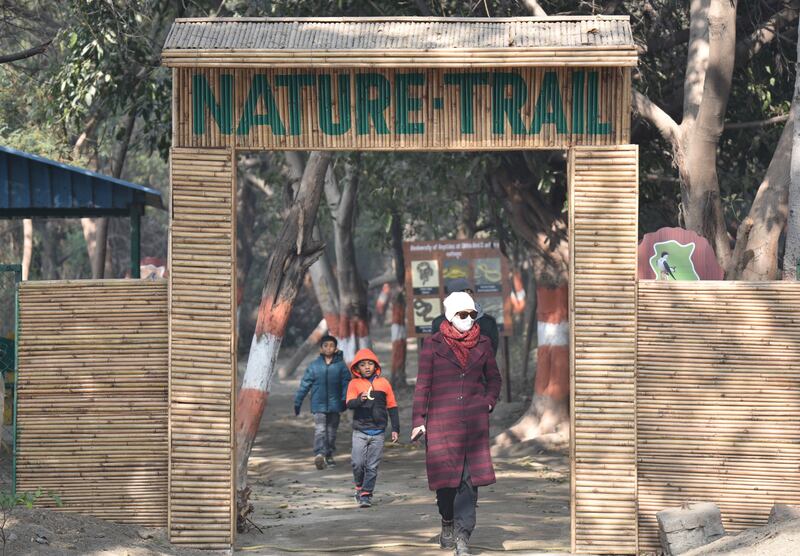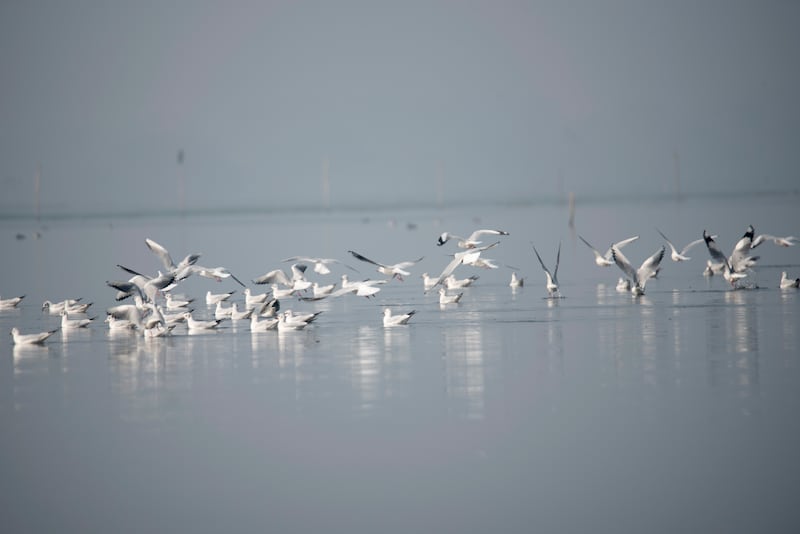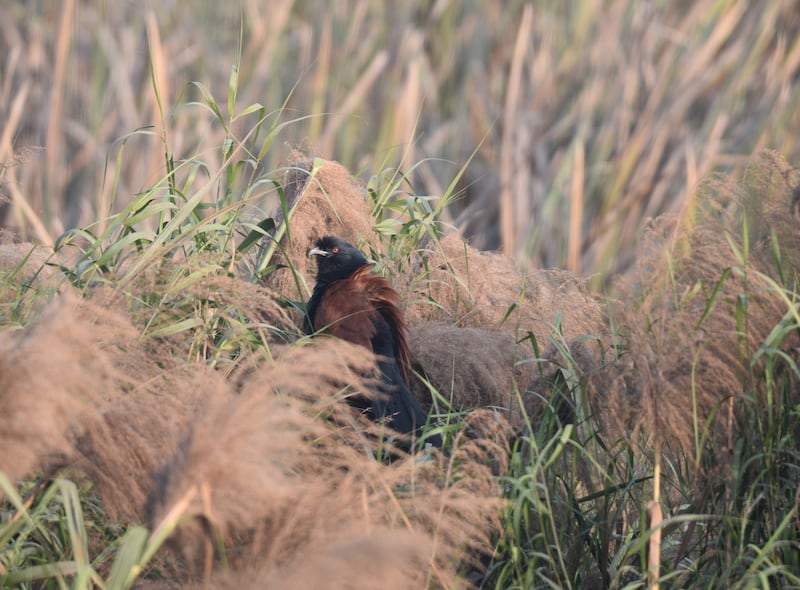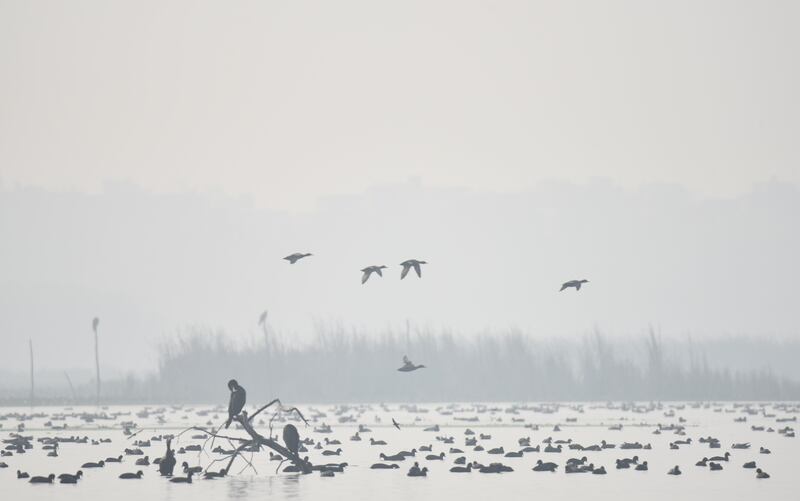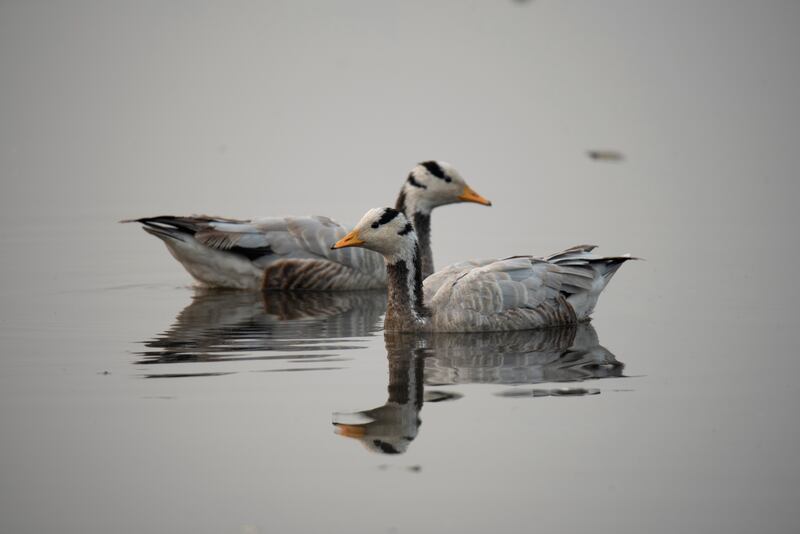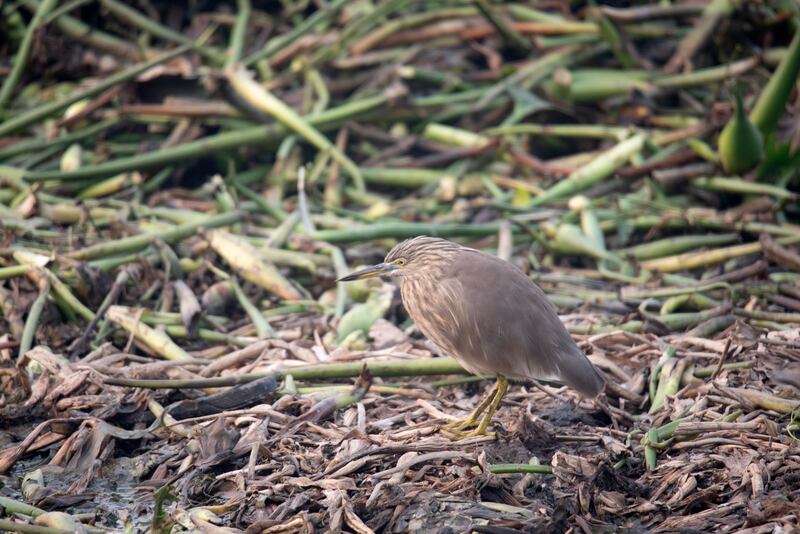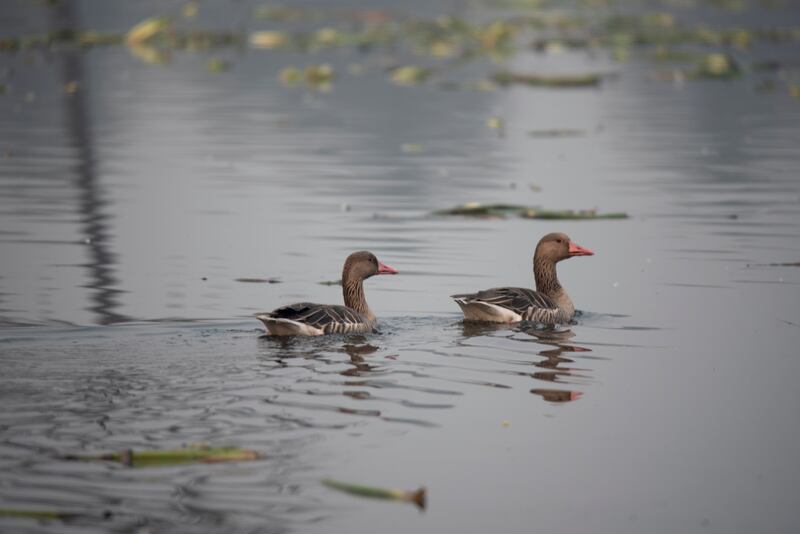
On a wintry afternoon in New Delhi, Shashank Sundar waited patiently with his camera on the banks of a wetland on the fringes of the Indian capital.
The water body, nestled among the city's skyscrapers, is a secret paradise for birdwatchers wanting to catch a glimpse of migratory flocks.
The 19-year-old computer science student and photography enthusiast, visiting from the southern city of Bengaluru, had until now seen only the bustling side of the city, and felt exhausted fighting the pollution.
But as soon as he stepped inside the Okhla Bird Sanctuary, the calmness was magical. Instantly, he felt rejuvenated, he said.
This hidden haven for birds and their watchers lies on the banks of the highly polluted Yamuna river shared by the twin cities of New Delhi and Noida — both among the most polluted in the world.
The 3.5 square kilometre bird sanctuary is also a secret getaway for nature lovers, offering relief from the city's hustle and bustle.
“Noida is called an industrial place and yet there is a bird sanctuary here,” Mr Sundar told The National. “You wouldn’t expect places like these to exist in a city where you only hear about pollution. It is wonderful to explore such a place.”
New Delhi has second-highest bird diversity in the world, behind Nairobi.
As many as 450 bird species can be found in the seven bird sanctuaries of New Delhi. Okhla Bird Sanctuary is the capital's largest.
The sanctuary is home to more than 300 birds, including some rare and critically endangered species such as the White-rumped vulture and Indian vultures.
As soon as winter descends, the cities are enveloped in a blanket of smog and temperatures drop, the landscape of the sanctuary changes entirely. The river becomes dotted with the hues of colourful feathers.
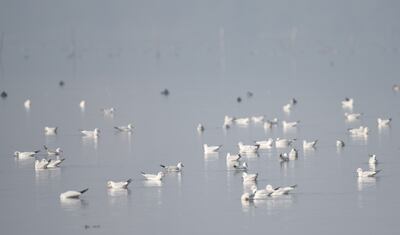
Hundreds of thousands of birds from Europe and Eurasian countries make the wetland their home every year.
More than 43 migratory water bird species, including Shoveller Duck, Northern Pintail, Common Teal, Gadwall Duck, Greylag Goose and Blue Winged Teal, as well as 26 woodland species, spend their winters at the wetland, according to official data.
The sight of the rare birds swimming in the clean water is one to behold on winter afternoons.
The picturesque sanctuary is also slowly picking up as a tourist spot among the city’s Gen Z, who are otherwise found spending their weekends at high-end shopping malls and restaurants.
Janaki Yadav and Indrani Ghosh, both 18, came to spot the birds from New Delhi’s southern localities after taking an exam.
“I was stressed but now I feel relaxed,” Ms Ghosh told The National. “It is a completely different picture. There is pollution outside but here it is fresh air, greenery and beautiful birds. We can walk, and this is a perfect place for taking pictures.”
Still, avid birdwatchers complain the concept of eco-tourism is harming for the habitat that is already under stress due to climate change and encroachments.
The result: this year, the sanctuary witnessed a lesser number of migratory birds than usual.
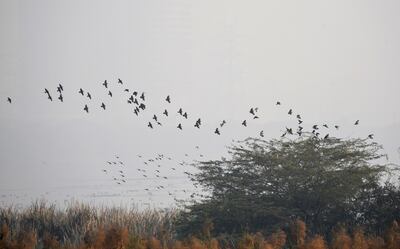
Experts say the waterbody was dry until November because of a delayed release of water from a nearby dam. This forced the birds to look for alternative habitation, mostly in the south of the country.
“There has been a decline of bird numbers and species in New Delhi,” Mathew Joseph, who runs the Delhi Bird Photographers group, told The National. “Earlier there were 40 to 50 species but now hardly five to 10. The city has also been colder than usual. Birds try to escape the cold and because of climate change, there is an impact.”
He also blames increased tourism for disturbing the habitat.
“At Okhla Bird Sanctuary, there was maintenance work in November and December,” he said. “Who in their right mind would do that when it is the prime time for birds to land? Authorities need to be aware and serious about this.”
His views were echoed by Prasanna Gautam, 55, a tour operator and an avid birdwatcher.
A regular visitor to the sanctuary every weekend, Mr Gautam is displeased with the authorities for turning the sanctuaries into picnic spots. The general public is rarely interested in the birds and disturbs the peace.
“The forest department has to change the concept of eco-tourism,” Mr Gautam said. “They are constructing portable cabins at the spots that used to be a flycatcher habitat. There are also washrooms.”
Mr Gautam also said that the authorities are not serious about saving the environment.
“They trim elephant grassland during the breeding season,” he said. “There needs to be an understanding of when to clean the grasses. Birds will not come if they don’t have the right habitat to eat and breed.”
